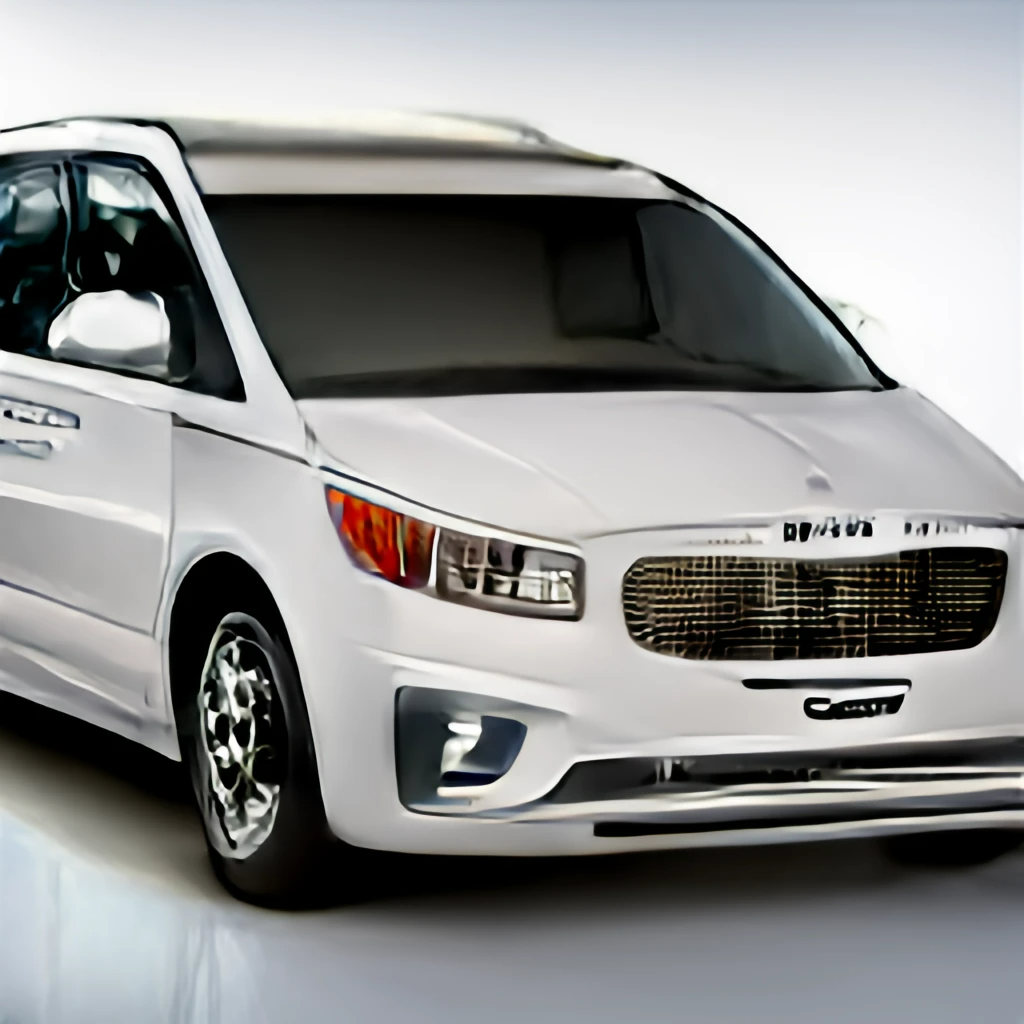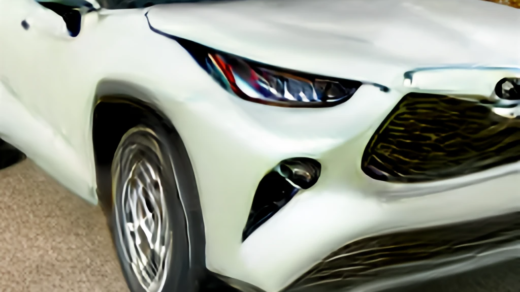Toyota Supra
Introduction
The Toyota Supra is a high-performance sports car that has gained a significant following among automotive enthusiasts since its initial introduction. The first generation of the Supra, known as the A40/A50 series, debuted in 1978 as a higher-performance variant of the Toyota Celica. Over the years, the Supra evolved into a distinct model, separate from the Celica, and became renowned for its powerful engines, agile handling, and sleek design.
The fourth generation Supra, the A80 series, is arguably the most iconic and well-known iteration of the model. It was produced from 1993 to 2002 and featured a distinctive rounded and aerodynamic design. The A80 Supra was powered by a range of engines, including the legendary 2JZ-GTE inline-six engine, which became a legend in the automotive world due to its durability and potential for high power outputs.
After a hiatus of over a decade, Toyota revived the Supra nameplate with the introduction of the fifth generation in 2019. Developed in collaboration with BMW, the new Supra, known as the A90 series, shares its platform and powertrain with the BMW Z4. The A90 Supra continues the Supra’s tradition of offering impressive performance, featuring a turbocharged inline-six engine producing over 300 horsepower. It also boasts a modern and aggressive design that pays homage to its predecessors.
The new Supra has received praise for its strong acceleration, precise handling, and overall driving dynamics. It offers a blend of comfort and performance, making it suitable for both daily driving and spirited track outings. The A90 Supra has quickly gained popularity among car enthusiasts, attracting attention with its sleek lines, powerful engine, and the continuation of the Supra legacy.
Performance
The Toyota Supra has a long-standing reputation for delivering impressive performance on both the road and the track. While the specific performance figures can vary depending on the generation and model year, here are some key performance aspects of the Supra:
- Engine Power: The Supra has often been equipped with powerful engines that provide exhilarating acceleration. The fourth-generation Supra (A80) is particularly renowned for its 2JZ-GTE inline-six engine, which initially produced around 320 horsepower (hp) and 315 lb-ft of torque. Modified versions of the engine have achieved much higher power outputs, with some enthusiasts pushing it to well over 1,000 hp. The fifth-generation Supra (A90) comes with a 3.0-liter turbocharged inline-six engine producing 335 hp and 365 lb-ft of torque.
- Acceleration: The Supra is known for its impressive acceleration capabilities. The A80 Supra with the 2JZ-GTE engine was capable of accelerating from 0 to 60 mph in around 4.6 seconds, while the A90 Supra can achieve the same feat in approximately 4.1 seconds. These figures may vary depending on the specific model and optional upgrades.
- Handling and Dynamics: The Supra has typically been lauded for its nimble handling and precise driving dynamics. The chassis and suspension systems are designed to provide excellent balance, agility, and responsiveness. The Supra’s rear-wheel-drive layout, low center of gravity, and well-tuned suspension contribute to its dynamic prowess, allowing drivers to enjoy spirited driving on both the street and the track.
- Top Speed: The top speed of the Supra can vary based on the generation and model. The A80 Supra had a factory-rated top speed of 155 mph (electronically limited). As for the A90 Supra, it has a governed top speed of 155 mph as well.
- Track Performance: The Supra has proven its track capabilities over the years. It has participated in various racing events and has been modified by enthusiasts for high-performance track use. The Supra has demonstrated its potential for impressive lap times and has been a popular choice among amateur and professional racers alike.
It’s important to note that specific performance figures can vary depending on the engine, transmission, modifications, and model year of the Supra. Additionally, aftermarket modifications and tuning can significantly enhance the performance of the Supra beyond the factory specifications.
Fuel Efficiency
Fuel efficiency is not typically the primary focus for high-performance sports cars like the Toyota Supra, as their design prioritizes power and performance. However, here are some general estimates of the fuel efficiency you can expect from different generations of the Supra:
- Fourth Generation (A80): The fuel efficiency of the A80 Supra largely depends on the engine and transmission combination. The most common engine option, the 3.0-liter inline-six (2JZ-GE), had an average fuel economy of around 18-20 miles per gallon (mpg) in combined city and highway driving conditions. The twin-turbocharged variant (2JZ-GTE) had a slightly lower fuel efficiency of approximately 16-18 mpg.
- Fifth Generation (A90): The A90 Supra with its 3.0-liter turbocharged inline-six engine has a fuel efficiency that is relatively better than its predecessors. On average, the A90 Supra achieves around 24-26 mpg in combined driving conditions, depending on factors such as driving style, traffic conditions, and terrain. However, it’s worth noting that the Supra’s fuel efficiency can vary based on individual driving habits and other factors.
It’s important to remember that these figures are approximate estimates, and real-world fuel efficiency can vary based on various factors, including driving conditions, driving style, vehicle modifications, and optional features. Additionally, fuel efficiency ratings may differ between different model years and trim levels. For the most accurate and up-to-date information, it is advisable to consult the official EPA (Environmental Protection Agency) ratings or the vehicle’s specifications provided by the manufacturer.
Comfort and Convenience
While the Toyota Supra is primarily known for its high-performance capabilities, it also offers a level of comfort and convenience features to enhance the overall driving experience. Here are some aspects of comfort and convenience you can expect from the Supra:
- Interior Comfort: The Supra provides a comfortable cabin for the driver and passenger. The seats are typically well-bolstered and supportive, designed to provide a secure seating position during spirited driving. The interior materials and finishes are of high quality, with attention to detail and a sporty aesthetic. However, due to its focus on performance, the Supra’s interior may have a more driver-centric layout with a lower seating position and a cockpit-style feel.
- Infotainment System: The Supra is equipped with a modern infotainment system that includes features such as a touchscreen display, Bluetooth connectivity, smartphone integration (e.g., Apple CarPlay, Android Auto), and navigation systems. The exact features and technology can vary depending on the generation and trim level of the Supra.
- Climate Control: The Supra typically offers a dual-zone automatic climate control system, allowing both the driver and passenger to set their preferred temperature settings independently. This feature helps maintain a comfortable cabin environment regardless of external weather conditions.
- Advanced Driver-Assistance Systems (ADAS): Depending on the model year and trim level, the Supra may come equipped with various driver-assistance systems to enhance safety and convenience. These may include features like adaptive cruise control, lane departure warning, blind-spot monitoring, rear cross-traffic alert, and automatic emergency braking.
- Storage and Cargo Space: While sports cars are generally not known for their extensive cargo capacity, the Supra does provide some practicality. The rear hatch design allows for a reasonable amount of cargo space, making it suitable for carrying luggage, groceries, or smaller items. Folding rear seats may be available in some models, further increasing cargo versatility.
It’s important to note that the specific comfort and convenience features can vary between different generations, model years, and trim levels of the Supra. It’s recommended to check the manufacturer’s specifications and available options for the particular Supra model you are interested in to get a comprehensive understanding of its comfort and convenience offerings.
Interior and Exterior Design
The Toyota Supra is known for its striking and sporty design, both on the interior and exterior. While the specific design details can vary between different generations and model years, here are some general characteristics of the Supra’s interior and exterior design:
Interior Design:
- Driver-Focused Cockpit: The Supra’s interior design is typically driver-centric, with a focus on providing a sporty and engaging driving experience. The center console, controls, and instrument cluster are oriented toward the driver for easy access and visibility.
- High-Quality Materials: The Supra often features high-quality materials and finishes throughout the interior, including soft-touch surfaces, leather upholstery, and premium accents. The attention to detail and craftsmanship contribute to a premium feel.
- Sporty Seats: The Supra typically comes with well-bolstered and supportive seats designed to provide comfort and stability during spirited driving. They may feature sporty stitching, adjustable features, and lateral support to keep occupants in place during dynamic maneuvers.
- Driver Information Display: The Supra often incorporates a digital driver information display or a combination of analog and digital gauges to provide key information such as vehicle speed, engine rpm, and performance data. This display is usually positioned within the driver’s line of sight for quick and easy access.
Exterior Design:
- Sleek and Athletic Profile: The Supra is known for its sleek and aerodynamic silhouette. It typically features a low-slung and curvaceous body with flowing lines that convey a sense of speed and athleticism.
- Aggressive Front Fascia: The Supra’s front end often showcases an aggressive and assertive design, characterized by a prominent grille, sleek LED headlights, and a sculpted hood. The grille may feature a mesh pattern or horizontal slats, emphasizing the vehicle’s sporty nature.
- Muscular Rear End: The rear of the Supra typically features muscular haunches, wide fenders, and a sculpted trunk lid. It may incorporate elements such as a rear spoiler, LED taillights, and quad exhaust tips, further enhancing its sporty and dynamic appearance.
- Attention to Aerodynamics: The Supra’s design often emphasizes aerodynamic efficiency to enhance performance. It may feature functional air intakes, side air curtains, and rear diffusers to optimize airflow and reduce drag.
- Eye-Catching Color Options: The Supra is often offered in a range of vibrant and eye-catching color options, including classic hues as well as more modern and bold shades, allowing owners to personalize their vehicle’s appearance.
It’s important to note that specific design elements and features can vary between different generations, model years, and special editions of the Supra. The design evolution of the Supra can be seen in the transition from earlier generations, such as the A80, to the modern A90, which pays homage to the Supra’s heritage while incorporating contemporary design cues.
Safety
The Toyota Supra incorporates several safety features and technologies to help protect occupants and enhance overall safety on the road. While specific safety features can vary depending on the generation and trim level, here are some common safety features found in the Supra:
- Advanced Airbag System: The Supra typically comes equipped with a comprehensive airbag system that includes front airbags for the driver and passenger, side airbags, knee airbags, and curtain airbags. These airbags are designed to provide protection in the event of a collision.
- Stability and Traction Control: The Supra features stability control and traction control systems, which help maintain vehicle stability and traction during various driving conditions. These systems can assist the driver in maintaining control and reducing the risk of skidding or loss of control.
- Anti-lock Braking System (ABS): The Supra is equipped with an anti-lock braking system, which helps prevent the wheels from locking up during emergency braking. ABS improves steering control while braking and reduces the risk of skidding.
- Electronic Brake-force Distribution (EBD): EBD is typically included in the Supra’s braking system. It automatically adjusts the amount of braking force applied to each wheel based on the current driving conditions, optimizing brake performance and stability.
- Tire Pressure Monitoring System (TPMS): The Supra often incorporates a TPMS, which monitors the air pressure in each tire and alerts the driver if any tire’s pressure falls below the recommended level. Proper tire inflation helps maintain optimal handling and can reduce the risk of tire-related incidents.
- Driver-Assistance Systems: Depending on the model year and trim level, the Supra may offer various driver-assistance features such as adaptive cruise control, lane departure warning, blind-spot monitoring, rear cross-traffic alert, and automatic emergency braking. These systems can provide additional safety by alerting the driver to potential hazards or assisting in avoiding collisions.
It’s important to note that while the Supra includes safety features, it is still a high-performance sports car. It’s crucial to drive responsibly, adhere to traffic laws, and adjust driving behavior to prevailing conditions to ensure the safety of all occupants and other road users.
Reliability
The Toyota Supra has a reputation for being a reliable sports car, particularly the fourth-generation A80 Supra, which is highly regarded for its durability and robustness. However, it’s important to note that reliability can vary depending on factors such as maintenance, driving conditions, and individual vehicle history. Here are some factors that contribute to the Supra’s reliability:
- Engine: The Supra has a history of utilizing reliable and well-engineered engines. The A80 Supra’s 2JZ-GTE inline-six engine is particularly renowned for its durability and ability to handle high power outputs. Proper maintenance, including regular oil changes and attention to cooling system maintenance, can help ensure the longevity of the engine.
- Build Quality: Toyota is known for its commitment to quality and reliability. The Supra is typically built with high-quality materials and components, contributing to its overall reliability. Attention to detail and rigorous manufacturing processes help maintain the Supra’s reliability standards.
- Maintenance and Service: Regular maintenance, including following the manufacturer’s recommended service intervals and using genuine parts, is essential for the long-term reliability of any vehicle, including the Supra. Adhering to proper maintenance practices, such as oil changes, fluid replacements, and routine inspections, can help prevent issues and ensure the Supra’s reliability.
- Aftermarket Support: The Supra has a strong aftermarket support community, providing a wealth of knowledge, resources, and upgrades. This can be advantageous in terms of finding solutions, diagnosing issues, and obtaining quality aftermarket parts and modifications that can further enhance the vehicle’s performance and reliability.
It’s important to keep in mind that individual experiences with reliability may vary, and regular maintenance and care are key factors in ensuring the longevity and reliability of any vehicle. It’s recommended to consult with professional mechanics, follow the manufacturer’s maintenance guidelines, and address any issues promptly to maintain the Supra’s reliability.
Value for money
The value for money of the Toyota Supra can depend on individual preferences and priorities. Here are some factors to consider when evaluating the Supra’s value for money:
- Performance: The Supra is known for its impressive performance capabilities, offering a balance of power, agility, and handling. If you prioritize exhilarating driving experiences and a high-performance sports car, the Supra can provide excellent value for money.
- Brand Reputation: Toyota is renowned for its reputation for reliability, build quality, and long-term ownership satisfaction. Owning a Supra means being a part of that brand heritage and benefiting from Toyota’s commitment to engineering excellence.
- Resale Value: The Supra, especially the fourth-generation A80 Supra, has established a strong following and holds its value relatively well in the used car market. While the fifth-generation A90 Supra is relatively new, it’s popularity and limited production may contribute to potential future appreciation in value.
- Exclusivity: The Supra, particularly the A90, offers a unique and relatively rare ownership experience. The limited availability and distinct design make it stand out among other sports cars on the market, providing a sense of exclusivity.
- Features and Technology: The Supra typically comes well-equipped with features and technologies that enhance the driving experience. These may include advanced infotainment systems, driver-assistance features, and high-quality interior materials. Evaluating the level of features and technology offered in relation to the price can help determine the value for money.
- Competition: When assessing value for money, it’s important to compare the Supra with other sports cars in a similar price range. Consider factors such as performance, features, reliability, and overall ownership costs to make an informed decision about its value relative to its competitors.
Ultimately, determining the value for money of the Toyota Supra depends on your personal preferences, budget, and intended use of the vehicle. Conducting thorough research, test driving the vehicle, and considering your specific needs and desires will help you determine whether the Supra provides the value and enjoyment you seek in a sports car.
Conclusion
The Toyota Supra is an iconic sports car that has gained a loyal following over the years. With its powerful engines, impressive performance, and striking design, the Supra delivers an exhilarating driving experience.


